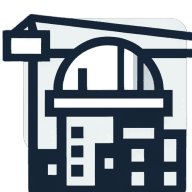How to Mitigate Rising Material Costs in Construction
Navigating the challenges of rising material costs in construction demands strategic approaches and informed decisions. This article distills expert advice on mitigating financial pressures through smart procurement, technology integration, and robust partnerships. Discover actionable strategies that industry leaders employ to stay ahead in a volatile market.
- Spread Cost Escalation Risks Fairly
- Integrate Technology to Improve Efficiency
- Be Transparent with Clients
- Leverage Bulk Purchasing and Partnerships
- Buy Materials in Bulk
- Practice Transparency and Smart Procurement
- Negotiate Long-Term Contracts and Bulk Discounts
- Use Bulk Purchasing and Supplier Partnerships
- Lock in Pricing Through Bulk Purchasing
- Focus on Early Procurement
- Buy Materials in Bulk or Secure Contracts
- Guarantee Optimal Material Choices
Spread Cost Escalation Risks Fairly
With over 15 years of experience in complex infrastructure and energy projects, I've seen how rising material costs can quickly throw budgets off track. It's a challenge that requires more than just cost-cutting--it's about planning ahead, sharing risks wisely, and making smarter procurement decisions.
One approach I've found effective is structuring contracts in a way that spreads cost escalation risks more fairly. Instead of locking in fixed prices that might become unworkable, we use mechanisms that adjust contracted prices based on relevant material cost indexes. Alliance contracts, for example, help create a more collaborative approach, ensuring that both clients and contractors have skin in the game when market conditions change. This not only protects budgets but also keeps relationships strong, avoiding disputes down the line.
Outsourcing internationally has also been a valuable tool. By looking beyond local markets, we can access more competitive pricing and reduce exposure to sudden cost spikes. Of course, this requires careful supplier selection to maintain quality and reliability, but when done right, it adds flexibility and resilience to the supply chain.
Another strategy that's worked well is centralizing procurement across multiple projects. Instead of negotiating materials separately for each job, we've entered long-term agreements with key suppliers--like steel structure manufacturers--that cover multiple projects. This locks in better pricing, ensures supply availability, and reduces the risk of last-minute price shocks.

Integrate Technology to Improve Efficiency
How We're Addressing Rising Material Costs in the Concrete Industry
Since the COVID-era supply chain disruptions, material costs in the concrete industry have continued to spike, and there's no clear sign of stabilization. The price of cement, aggregates, and admixtures has surged due to supply shortages, fuel price volatility, and increased production costs. Contractors, homeowners, and business owners alike are feeling the impact, making accurate estimating and material takeoffs more critical than ever.
At Hydeout Concrete, we've had to adapt by integrating technology to improve efficiency and reduce waste. One of the most effective tools we use is the Moasure ONE device, which allows us to capture fast, precise site measurements without the errors of traditional methods. This ensures we order only the exact materials needed, minimizing overages and keeping costs under control.
Beyond material efficiency, Moasure has also streamlined our estimating process, allowing us to provide faster, more accurate quotes for clients while reducing the risk of costly miscalculations. In an industry where every dollar matters, using technology-driven solutions like Moasure helps us stay ahead of rising costs while ensuring projects remain on budget.
With material costs unlikely to drop anytime soon, adopting tools that enhance precision, optimize takeoffs, and prevent waste has become essential. At Hydeout Concrete, we remain committed to leveraging the best technology available to navigate industry challenges and continue delivering high-quality results for our clients.

Be Transparent with Clients
Rising material costs are a reality, especially with the tariff situation in the US making things even more unpredictable. The best way to handle it? Be upfront with clients. No sugarcoating, no surprises. Let them know early on that prices are fluctuating and explain how it impacts their project. Transparency builds trust and trust keeps business steady even when costs are high.
One strategy that works? Lock in material prices early. If you can negotiate bulk purchases or secure contracts with suppliers before costs spike, you protect both your margins and your clients' budgets. Another option is value engineering, finding alternative materials that maintain quality but cost less. At the end of the day, communication and planning are key. No one likes a price hike but they will respect you for keeping them informed and finding solutions.

Leverage Bulk Purchasing and Partnerships
Rising material costs in construction have been a challenge, but one strategy I've relied on is leveraging bulk purchasing and strategic partnerships with suppliers.
Early in a project, I analyze material requirements in detail, and wherever feasible, I negotiate bulk deals for commonly used items. This not only locks in pricing but also ensures availability when market fluctuations can cause delays.
I remember a project where prices for steel were unpredictable, and delaying purchases could have derailed the budget. Instead of waiting, I coordinated with my supplier to secure the material in advance at a lower rate.
It required some adjustments to cash flow, but it ultimately saved us from the higher costs later on. Building that rapport with suppliers has made a significant difference, as they now notify me of potential price shifts early.
For others facing similar challenges, my advice is to plan proactively and build relationships with trusted suppliers. Being prepared and adaptable can help manage costs without compromising the quality or timeline of a project.

Buy Materials in Bulk
As someone working in fence construction, I can tell you that the growing costs of materials can put strain on budgets especially on running and line-up projects. To tackle this problem, we've started buying materials in bulk and always keep a stock on hand. This ensures that our ongoing projects and upcoming ones aren't affected by price hikes for at least a couple of months, helping us minimize the impact on project budgets.
Practice Transparency and Smart Procurement
As the CEO of a construction company focusing on new homes, we've found that transparency with customers and smart procurement practices have been key drivers of customer loyalty. People know that stuff costs more money now, but they want you to spend their budget as wisely as possible. And as their builders, it is our responsibility to make this happen. Our approach to transparency and procurement has set us apart in the industry and fostered strong relationships with our clients. Our data-driven approach to procurement has led to a reduction in supply chain disruptions. This means fewer delays for our customers and more reliable project timelines. The longer a house sits, the more expensive it becomes for all parties involved. Since we are so good with procurement, we are as cost efficient as possible. We've also implemented stringent supplier evaluation processes, ensuring that we work only with the most reliable and high-quality material providers. This translates to better-built homes for our customers, which is crucial for maintaining customer loyalty. Transparency is another cornerstone of our business model. We allow clients to see exactly how we're managing costs and making procurement decisions, building trust and accountability throughout the construction process. This does not help the challenge of rising material costs as much, but it leads to overall client satisfaction - which is ultimately most important to me.
Negotiate Long-Term Contracts and Bulk Discounts
One effective strategy to mitigate rising material costs in construction is bulk purchasing and establishing strong supplier partnerships. By negotiating long-term contracts and bulk discounts with trusted suppliers, we can secure more stable pricing and protect ourselves against market fluctuations. This approach not only helps in reducing the per-unit cost of materials but also ensures a steady supply, preventing delays due to shortages.
Additionally, we focus on sourcing materials locally whenever possible. Purchasing from local suppliers minimizes transportation costs and reduces lead times, which can be critical for maintaining project schedules and budgets. It also supports the local economy and can improve sustainability by lowering the carbon footprint associated with long-distance shipping.
Furthermore, we implement value engineering to explore alternative materials that provide the same durability and performance at a lower cost. By working closely with architects, engineers, and suppliers, we identify cost-effective substitutions that meet project requirements without compromising quality or safety.
Finally, leveraging technology and data analytics allows us to track price trends and anticipate fluctuations. This helps in making informed purchasing decisions and adjusting procurement strategies proactively rather than reactively.
By combining these approaches, we effectively manage rising material costs while maintaining project efficiency and profitability.
Use Bulk Purchasing and Supplier Partnerships
One strategy we've used to address rising material costs in construction is bulk purchasing and supplier partnerships. By negotiating long-term agreements with suppliers and buying materials in bulk whenever possible, we lock in pricing and reduce the risk of sudden cost spikes.
For projects with flexible timelines, we also monitor market trends and strategically time purchases when prices dip. In some cases, sourcing alternative but equally durable materials has helped maintain quality without exceeding budget.
The key takeaway is that proactive planning and strong supplier relationships can help control costs and keep projects on track despite market fluctuations.
Lock in Pricing Through Bulk Purchasing
We've implemented several strategies to manage rising flooring material costs while maintaining quality. First, we leveraged our supplier relationships to lock in favorable pricing through bulk purchasing agreements. Second, we introduced a tiered product lineup that offers quality options at different price points. Third, we developed a cost-comparison tool that helps customers understand the long-term value of different flooring choices. This transparent approach has actually increased our high-end sales by 25% as customers better understand the value proposition of premium materials.

Focus on Early Procurement
To tackle rising material costs, I focus on early procurement and bulk purchasing. This strategy helps lock in current prices before they spike, saving up to 15% on materials. By coordinating with suppliers early, we can secure better deals and avoid future price surges, keeping projects on budget. It's all about planning ahead and building strong relationships with suppliers.
Buy Materials in Bulk or Secure Contracts
One way to handle rising material costs in construction is by buying materials in bulk or securing long-term supplier contracts. This helps lock in prices and avoid sudden cost increases.
Another strategy is using alternative materials that are more cost-effective but still high quality. For example, switching to engineered lumber or recycled materials can help lower expenses without sacrificing durability. Careful project planning and reducing waste also help keep budgets under control.
Guarantee Optimal Material Choices
Value engineering is used to guarantee optimal material choices with cost-effective alternatives that do not compromise quality. During the preconstruction stage, we welcome material substitutions, means and methods substitutions, and design efficiencies that reduce costs during the pre-planning period while still maintaining structural integrity. We turn to our network of subcontractors, architects, engineers, and even suppliers to present viable options that are aesthetically pleasing, cost-effective, and energy efficient so that come the next phase with a guaranteed maximum price, material costs will not be a concern.








